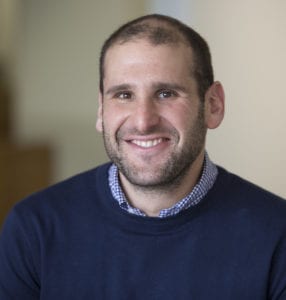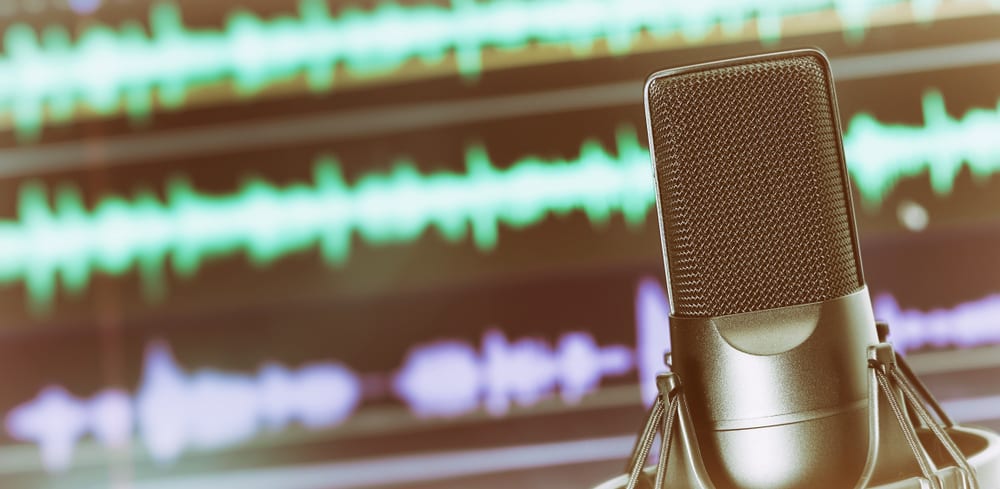4 Tips for Starting Your Own Podcast
By: Noah Leavitt, Assistant Director of Strategic Communications and Marketing, Harvard T.H Chan School of Public Health
March 20, 2019
Podcasting can be a fantastic way to reach your audience and engage with them in a meaningful way. While many forms of digital content lead to brief engagement—a like or a share—a podcast requires the listener to invest time and actively consume your content.

Noah Leavitt, Assistant Director of Strategic Communications and Marketing, Harvard T.H Chan School of Public Health
In October 2015 I helped the Harvard T.H. Chan School of Public Health launch its first podcast, and while we’re not blowing up the iTunes charts, we have seen steady growth. Each of our episodes is downloaded between 7,000 and 9,000 times, and statistics from Stitcher show that the average listener completes 64 percent of each episode—a better completion rate than most of our video content.
Beyond engagement, a main benefit of podcasting is that it’s a low-cost way to produce content (after an initial investment) and can be done with a relatively minor time commitment compared to video. I produce my podcast with about $400 worth of equipment and each episode can be wrapped in about five hours, including pre-production, interviews and editing. Here are my four quick tips for starting your own podcast.
Figure out the story you’re trying to tell
This is a basic piece of advice I give to anyone considering a new content direction—whether it’s a social media account or an email newsletter. Before you even think about investing in equipment, figure out the goals of your podcast. Who are you trying to reach? Why are you trying to reach them? How will you reach them?
Take some time to think about the best format to achieve these goals—it may be a simple one-on-one interview format, or you may decide to invest time in a “Serial”-style narrative podcast. The answers to these questions will drive fundamental decisions including your production schedule, the equipment you’ll need to buy and how you’ll host and share your podcast.
This is also a good stage to determine how often you’ll release episodes. I think monthly is probably a good start for most podcasts—it’s regular enough to build an audience, but is not an overly demanding schedule. Another option is to release your podcast in seasons or mini-seasons, possibly around a particular theme.
Develop a promotional strategy
There’s more work to be done before you head into the studio. You’ll want to map out your promotional strategy well in advance. Where will your podcast be hosted and can it be easily embedded? Will it get a dedicated website? How will you provide transcripts for listeners (highly recommended for web versions of your podcast)? How will you share and promote each episode?
All of these answers will vary depending on the nature of your podcast, but there are many great resources available. We use Simplecast to post our podcast to iTunes and a variety of other platforms (including Spotify). And Soundcloud, despite its murky future, remains a solid option for hosting and embedding episodes.
I also recommend making sure that each episode has a web presence; it can be a fantastic place to post additional resources for listeners and provides an easy landing page for sharing on social media or in email newsletters. As part of this process, invest in transcripts for each episode (3play Media offers transcription for around $2.65 per minute). Transcripts are key to creating an accessible piece of content, not only for those who are hearing impaired, but for listeners who may be interested in an episode but are unable to listen and may prefer to read.
A key piece of advice is to have several episodes produced “in the can” before you decide to launch your podcast. That way you don’t find yourself in an immediate struggle to finish more episodes.
Focus on capturing quality audio
Mistakes in audio recording are incredibly difficult to fix in post-production. That’s why it’s important to focus on how and where you’ll record your podcast—whether it’s interviews with guests or your introduction as a host. We use basic equipment that has the benefit of recording high quality audio while still being portable: a Zoom H4N recorder, Shure microphones and windscreens, and some basic microphone stands. All of this equipment can be purchased for around $400, but will go a long way towards helping you record a professional sounding podcast.
Where you record is just as important as how you record. In an ideal situation you would have access to a soundproof studio (although if your company or institution does not have one, there are an increasing number of public recording spaces available, such as Boston’s Podcast Garage). If you don’t have access to a studio, focus on finding another quiet space: for an example an office or conference room with no windows and a sturdy door. The key is to find a place where you can control the recording environment and eliminate distracting ambient noise.
For editing, we use Adobe Audition, but that does come with a high price tag. If you’re looking to save money, free services like Audacity are sufficient for most basic audio editing.
Get people to tell stories
Podcasting exploded on the back of narrative-driven shows like “Serial” and “This American Life”—but even interview-based shows are driven by storytelling. That story may be one of personal growth, or how a scientist overcame a challenge in the lab to address a public health threat. The key is to have a narrative arc with each episode (or season). Podcasts can (and should be) educational and informative. But they’re also a great opportunity to shed light on something new or to take listeners behind the curtain. Ask people to tell you about their journey. Ask about decision points along the way. Good stories are built on tension and resolution, and focusing on these decision points are easy ways to create both in your podcast. Storytelling will also help your listeners connect with your podcast and hopefully keep them engaged longer.


